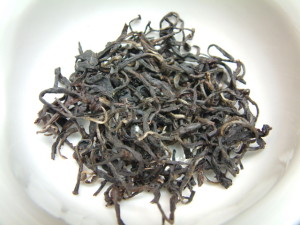
Future Buddha, Emei Lake, Hsinchu County, Taiwan
This post is something of a departure from most of our others where we focus on history, culture, and simply great tea. But intermittent fasting, longer fasts, and a ketogenic or low-carb high fat (lchf) lifestyle is something we (the owners of Dominion Tea) have adopted and seen great personal benefit from. We are very focused on how to maximize our health over our entire lifespan and see this lifestyle as part of how we do this. So many modern ill’s today (heart disease, diabetes, arthritis, Alzheimer’s, and potentially even cancer) have roots in the standard American diet.
We’ve made significant changes to our lifestyle over the past 18 months and are more convinced than ever that real food is critical to the prevention of many, perhaps even most modern illnesses. Real food is ideally nothing heavily processed nor has much of an ingredient list. Most of the time it doesn’t event come from a package!
This gets us to the point of this post. Tea is widely accepted within the keto/lchf community as a support for those doing intermittent fasting or even prolonged fasts. This isn’t anything new though. Some of the earliest associations of tea and fasting come from Buddhism. Monks during the Han (206 BCE – 220 CE) and Song Dynasties(960 – 1279 CE) would have tea to support meditation (Buddhism and Tea). Buddha even recommended intermittent fasting and one meal a day to his followers, with nothing consumed after noon (Food & Insight).
Real tea has caffeine which some can’t live without and has been found to suppress hunger in some people. Tisanes have no caffeine but can also provide something to hold one over during fasts. Either option is a great tool to support an overall keto/lchf lifestyle which may or may not include some fasting.
What really bothers us though are the “keto teas”. They go along with the keto bars, keto deserts, and other “keto” products that marketers are coming up with to sell products you really don’t need. So keto teas, for the most part, are really nothing more than simply tea having some added ingredients that may have beneficial qualities — though these claims usually lack strong evidence or require amounts far in excess of what’s in the tea itself. Worse still are products manufactured as “ready-to-drink” or tea “crystals” that have been heavily processed to effectively make an instant tea product.
Looking for a great tea to compliment your keto lifestyle? All you need is a great quality tea with a flavor you like. We prefer green teas and herbal/tisanes during fasting.
Green Tea Suggestions for Keto
- Ginger Biscuits – Organic Green Tea, Organic Ginger Root, Organic Lemon Grass, Organic Lemon Mytle
- Hundred Year Tea – Organic Green Tea, Organic Schisandra Berries, Organic Goji Berry, Organic Astragalus, Organic Cinnamon, Organic Ginger Root, Organic Licorice
- Jasmine Green Tea – Organic Green Tea with Jasmine
- Moroccan Mint – Organic Jasmine Green Tea, Organic Peppermint
- Matcha Infused Sencha – Organic Japanese Sencha Green Tea, Organic Japanese Matcha Green Tea
- Sencha – Organic Japanese Sencha Asamushi Green Tea
Herbal/Tisane Suggestions for Keto
- Amber Mint – Organic Rooibos, Organic Peppermint, Organic Orange Peel, and Safflower Petals
- Ginger Honeybush – Organic Lemon Myrtle, Organic Goji Berry, Organic Honeybush, Organic Ginger Root, Organic Fennel Seed, Organic Lemon Grass
- Lavender Dreams – Organic Lavender, Organic Raspberry Leaf, Organic Blackberry Leaf, Organic Chamomile, Organic Licorice Root, Organic Lemon Myrtle, and Organic Peppermint
- Martha’s Mint – Organic Peppermint, Organic Spearmint
- Moroccan Nights – Organic Rose Buds and Petals, Jasmine Flowers, Organic Spearmint Leaf
- South African Chai – Organic Cinnamon, South African Organic Rooibos, South African Organic Honeybush, Organic Ginger Root, Organic Cardamom Seed, Organic Fennel, Organic Clove, Organic Star Anise, Organic Peppermint, and Organic Black Pepper








